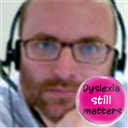Repaved paths and generative metaphors: Expressing human purposes with technology
Note: This is an edited version of my side of a discussion on an education technology mailing list.
I fully subscribe to the idea of thinking about pedagogy as being a type of technology (so are cultural institutions according to anthropologists and many people even think of language that way). But most people think of technology as ‘digital technology’ which is how ‘education technology’ is used. For them technology is a real or virtual machine that performs tasks independent of human intervention or in response to basic human actions. What I find most useful is switching between the two perspectives.
But I’d want to expand the statement ‘technology is something we use to achieve our purposes’ into ‘technology is something we use to express our purposes’.
Often, a poet will be led by rhythm and rhyme to uncover new possibilities of meaning. New analogies or comparisons will inspire a scientist to formulate an innovative hypothesis or an engineer to rethink a mechanical problem (Donald A Schon called these sorts of analogies generative metaphors). These ‘purposes’ did not exist before the technology of language made them real.
The same goes for (digital) technology. It allows us to express new purposes. It is always developed to achieve some end assuming a purpose but only the reality of use can reveal its true potential (or allow an expression of a useful human purpose in real life contexts). That does not mean that the original purpose was wrong or that it was poorly addressed by the design of the ‘kit’. Take Instagram — it started as a photo sharing site (and a really good and successful one) but since then it’s developed into a social network and even a place where people sell things.
Likewise, interactive whiteboards (often given as an example of an overhyped failed investment) were a very good idea and in the hands of a skilled, enthusiastic teacher, they do great work. But it turns out that most teachers end up using them to project PowerPoints or Word documents. That’s still useful but less than intended — so unlike with Instagram (or Twitter) which is used to achieve more than intended, interactive whiteboards are used to achieve less. But they’re still used.
I’m always reminded of the history of Moodle which started as an expression of a particular pedagogical approach but that users started using in a very different way until it responded and became just a standard VLE. Moodle tried to embody an expression of a purpose of a sort of student-centred dialogic pedagogy but teachers used it as a way of sharing documents with students, giving them quizzes, and generally telling them what to do. Now it is a completely structured environment for teachers to guide students step by step. It started as a way to give teachers a way to let students express their learning through open dialogue. Now its design gives expression to the purposes of teachers who want to tell things to students because it turns out that’s what most teachers want to or have to do.
A similar thing happened to the ‘technology’ of critical pedagogy. It started with Freire’s pedagogy of the oppressed styling education as a tool of liberation. But it turns out teachers trained in it mostly ask a lots of questions to which the students provide answers they think the teacher wants to know. Most of so-called student-centered pedagogy tends to revert to the mean of teacher telling students stuff. Thus expressing a human purpose of keeping 30 young bundles of energy in their seats with a minimum of ruckus.
An oft-quoted (possibly apocryphal) example is of Stanford not building any paths on their new campus. They simply looked at paths trodden in the grass after a few semesters and then paved them. This is a technique that would be hard to replicate in most contexts (although the Agile development philosophy tries this with programming and tech start ups try this with pivots).
But being open to repaving once new paths are trodden alongside those you outlined with your technology (be it critical pedagogy or iPads) is perhaps the most important thing we can do in our ed tech efforts.
